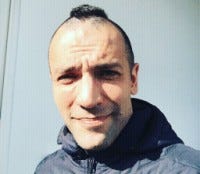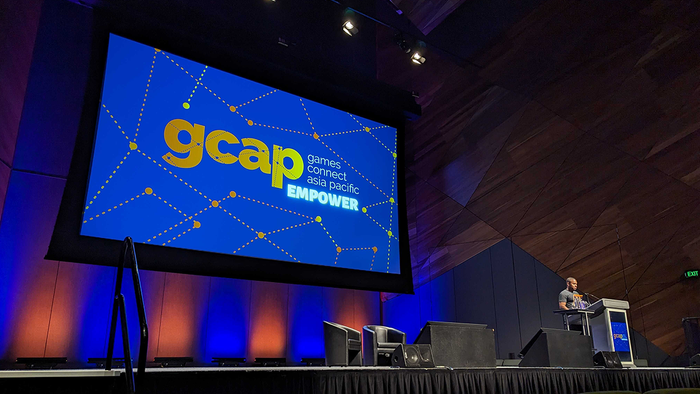To boldly go
Building a software development team in Wargaming, a multi-cultural international company - approaches, actions, lessons learned.

For the last five years we used to be a unit of generalist business analysts acting as Wargaming publishing department’s representatives in software development projects. Eight months ago, due to changes in organizational structure, we found ourselves responsible for a group of about fifty software developers, system analysts, QA engineers and managers in two geographical locations, with a task to transform ourselves into a software development team. While the basic idea of the reorganization was clear, questions started to pop — “how we communicate re-organization goals on a team level?”, “how we structure?”, “how we comply with a global development organization?”, and “how not to lose teammates to the fear of change?”. These are highlights of our first eight months on a mission — challenges we encountered, ideas and approaches we considered, actions we undertook so far.
The Case
The vector of organizational change in Wargaming for the last couple of years leads to a point where we have three centers of excellence — games development, platform services, and human facing tools — instead of one development organization doing all three.
People who joined our unit in April 2017 were not an established team or department, those were bits of a large software development department, a result of a major reorganization, which didn’t happen in a day. It was “yet another re-org” feeling that prevailed on a personal (smoking room or coffee shop if you prefer) communication level. “What now?” was a major question for new guys as well as for ourselves.
First of all, we had to choose the organization style for our new team. It may sound easy, but in multicultural international company like Wargaming, you always have to keep in mind the bigger picture. It is not enough to setup your specific team, you also need to think of how this micro culture will interact with other teams located around the globe, teams you have mutual dependencies with, shared responsibility and often - different report lines. At some point a word “culture” resonated in our minds and we agreed that culture would be a key. But where do you start to define and articulate culture? Hoping to find clues, we looked at Wargaming as a cultural phenomenon.
The Research
Wargaming is known to achieve tremendous success in the genre and setting that no one could have possibly imagined with resources that would have never been considered as sufficient for success.
As far as companies are concerned, from what I've witnessed for the years, at some point they become the metaphysical projections of their founders. Wargaming and its spirit is influenced by Victor Kislyi’s personality. And one thing you may be sure - in the whole endless and ever-changing universe, there's no such reality where Victor Kislyi says "c'mon folks, just do it like those guys and we'll be fine”.
There's a famous quote from Original Star Trek TV series intro - "to boldly go where no man has gone before". There’s also a Russian airborne troopers’ saying, that could be translated to English as “They're expecting us from the skies but we'll ski down from the hills!” (rus. “Нас ждут с неба - а мы с горы на лыжах!”). These two expressions highlight two major components of Wargaming spirit. First - we are pioneers and adventurers. Second - we are doing it our way. And there are things we’re not going for, even though they are very promising revenue-wise.
We’re diverse - dreamers, scientists, strategists, engineers, artists, negotiators, salesmen, fighters, men and women from many places on Earth, but we stand as one with this shared mindset. Being followers, or normal, or OK with what we have is not our option. Wargaming runs on challenges and things others would consider impossible. To put it short - Wargaming is all about doing things no one (including ourselves) has done before.
And then it went “click” — doing never-done-before things is much stronger motivation than passion or money. And we decided to build on this. In order to settle this mindset on a team culture level we decided that we will go in three directions.
The Plan
Switch our new team from management driven to makers driven organization. Being managers ourselves, we articulated our new role as “talent agents”. We are lucky enough to be in the industry driven by the makers (developers, artists, writers, designers of all kinds). If something fantastic is going to be done — it is going to be done by them. They are superstars, and we are here to help them shine. May sound a bit fluffy at first, but the cool thing here is that this approach works both ways — if you as a manager state that you’re a talent agent for superstars, those folks got to be superstars in fact, otherwise there’s no deal. Which brings us to the second point.
Bring new mindset into daily life. Let makers be the owners of their creations. Thousands of times we’ve all been witnessing elegant solutions converting into ugly monstrosities when the makers were stomped by management. Giving ownership to the maker means creative freedom combined with responsibility. This is grown-up approach in our understanding. To set foundations of it we’ve used the help of agile coaches, strategic and foresight consultants that worked with our team on different levels for three months. After we’ve made our first step in transformation on a mind level, we started thinking about how to set this never-done-before approach as a reference, as a beacon, and reward people when it is wisely implemented. This brings us to the third point.
Create material artifacts of your culture. As any culture, you need material artifacts and rituals, that are in fact a simplified symbols and role models of your ideal world.
In terms of artifacts we’ve chosen a Stanley Cup approach. Starting from September 2017 we have a physical Team Challenge Cup and the Book of Deeds. We have five personal and two team nominations, that mark what kind of persons and team we want to become - nominations like Hero, Team player, Inventor, Professor and Visionary speak for themselves. Every month the Cup Keeper may (or may not) reward a person or a team, in which case their names will be carved on the Cup and the details of their achievement will be written in the Book of Deeds.
As for the rituals, we’ve started with questions. How you naturally let people know what their teammates are doing, what other departments in the company are doing, and finally - what is the core of a company business? How you picture the ideal model of team culture and do it in a way that is casual, interactive, challenging and fun? The answer popped up suddenly - the best way to learn something is to do it yourself. What to do? Something that our company does for years, and something we’ve never done before as a team - the game. After two months of discussions and preparations we’ve announced a two-days long team role-playing game that reflects the work of a game development company from concept pitch, through planning and development to a public release. The team was split into five units - development, game design, art, copywriting and marketing. No management roles. Every unit received it’s own list of tasks that all together led to creation and release of the actual game. After 36 hours of crunch in a coworking space we’ve came up with an “online adventure turn-based sci-fi fighting with RPG elements”. No kidding. The game we created was 100% playable and available for public. The team rated the event 9 out of 10 in terms of their personal satisfaction and the likelihood they will recommend such event to people in other departments, so we have agreed that this event is going to be our team's annual quest and will be called “Game Of The Year”.
The Outcome
Now we are busy with planning our next year, still a long way to go. Looking back at what we have achieved so far, I would point out three things.
We’ve managed to get rid of stakeholder-project-team Gordian knot. If you worked on a big and long-lasting software development projects, you would know that at some point of time main stakeholder, project and team fuse into a seemingly rock solid self-defending structure. The project gains features of its main stakeholder, and the team becomes strongly associated with the project. This leads to problems in market orientation, organization, quality and reason. On a portfolio level, it limits you in change options. Makers driven organization allows you to switch from having one person with the secret knowledge and a group of believers, to having shared understanding of the work being done from ground up, this makes stakeholder-project-team connections flexible. Which leads us to second point.
Confident dev team. We’ve started to notice that makers driven approach allows the team to feel confident. Questions like “what will happen if this project shuts down or stakeholder changes” start to go away, because your team knows what they’re doing and they know that rockstar developers are in a great need and whatever changes will come up it could be challenge but it also will be an adventure.
And the last one, and the most important for me personally, is smiles. That feeling when you first caught those suspicious or anxious sights from teammates when you’ve met them, and then you start to notice that they smile to you and call you by name when you occasionally meet, this is worth everything.
Read more about:
BlogsAbout the Author(s)
You May Also Like







